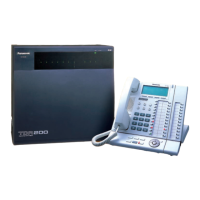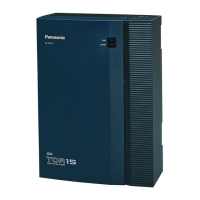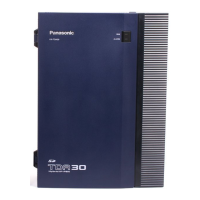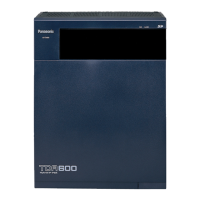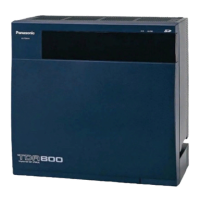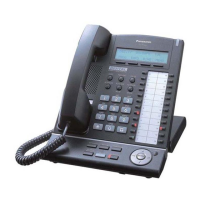1.13 P
242 Feature Manual
2. Network PBX ID Assignment
Assign a Network PBX ID to each PBX in the network.
→ 2.15.2 [9-2] Network Data Transmission—Network BLF Data Transmission for Centralized Operator
Feature—Network PBX ID
• IDs 1-8: Can monitor extensions at other PBXs, and transmit monitor data about local extensions.
Each ID number can be assigned to one PBX within the network.
• ID 0: Retransmits monitor data throughout the network. This ID number can be assigned to multiple
PBXs.
3. QSIG Port Setting [Monitored PBX]
ISDN-QSIG (PBX Direct Connection)
Each QSIG port of a PRI card that will be used to transmit extension status information must be set to
do so through system programming. Even if a port is set to not transmit information, it will still receive
information from other PBXs.
→ 2.7.14 [1-1] Slot—PRI Port (KX-TDA100/KX-TDA200/KX-TDA600 only)—CO Setting—Networking
Data Transfer
Set the transmission setting for each port according to the layout of your network, so that extension
status information can travel between NDSS monitor PBXs.
[Example ISDN Network Port Setting]
IP-GW-QSIG
IP data is routed through the network according to the routing tables of the IP-GW cards. When using
Transmit Extension Status Information Functions
Enabled • Transmit information on own PBX extensions
• Receive information from other PBXs; forward it to other QSIG ports of the
PBX
• Re-transmit information received by other QSIG ports of the PBX
Disabled • Receive information from other PBXs; forward it to other QSIG ports of the
PBX
PBX-1
Network ID 1
PBX-2
Network ID 0
4001
Idle Busy
OFF
OFF
ON
ON
ONOFF
OFFOFF
ON
4001
Busy
4001
Busy
4001
Busy
PBX-3
PBX-5
PBX-4
Network ID 3
Idle
4001 NDSS
Busy
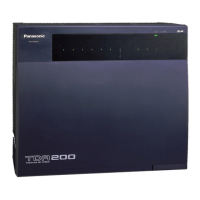
